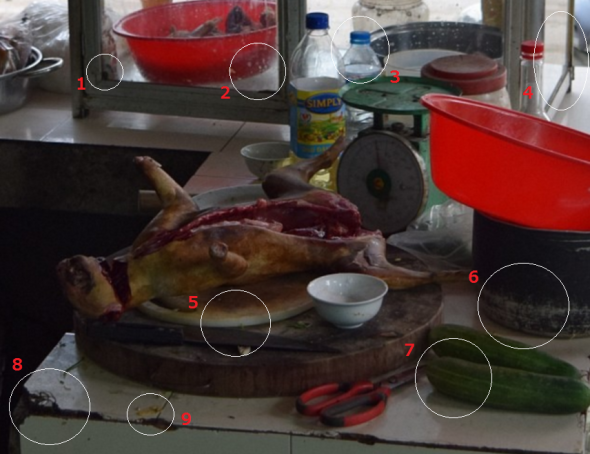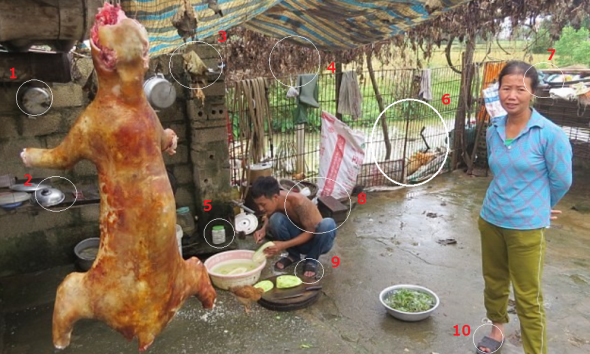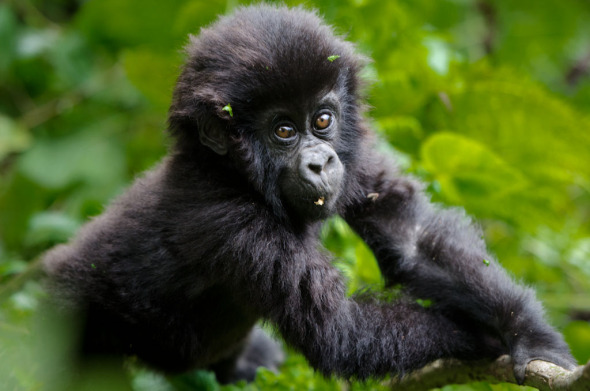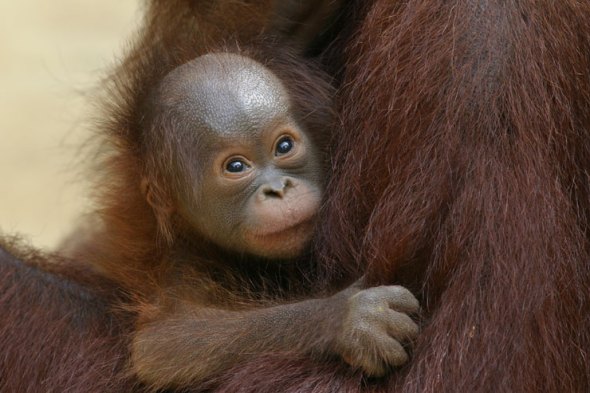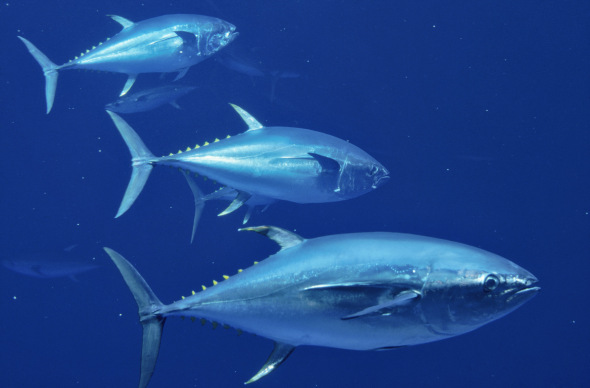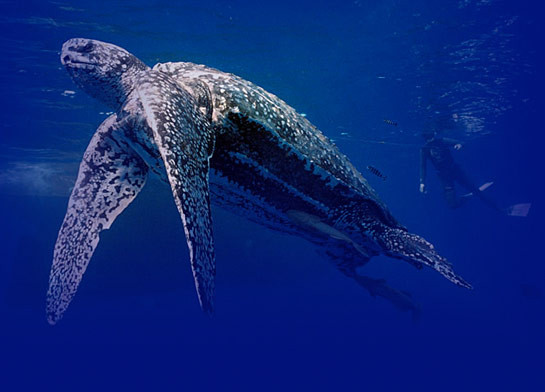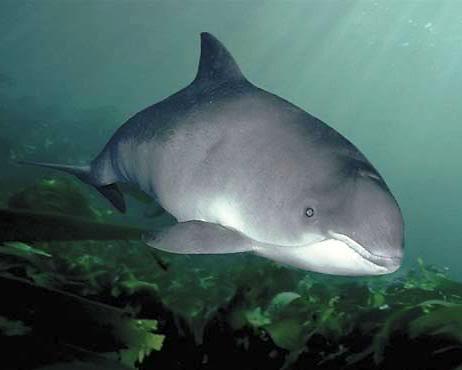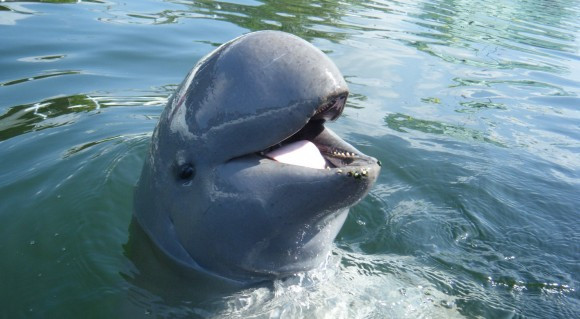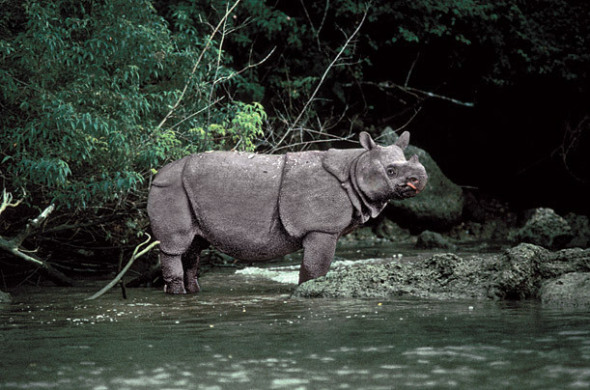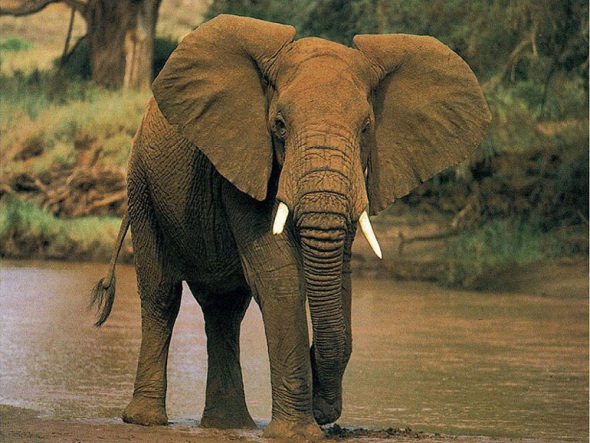Food Violations - Pet Meat Trade | Food Terrorism.
FOOD VIOLATIONS IN THE PET MEAT TRADE
One of thee biggest and most concerning problems I witness within the pet meat trade is multiple food and hygiene violations. Violations that place both human and animal life at risk of disease and in worst case scenarios - Death. Furthermore I often witness many organisations online that either disregard this critically important health risk, or seem more concerned about posting graphic images on the trade while soliciting donations, yet seemingly not bothering to educate their viewers on the “importance of these images and videos, down to how these images and videos can actually help to wipe this repulsive trade out once and for all”.
So today I have again decided to document on such violations, but am going to educate all seven million of our viewers around the world of just how serious the images depicted herein actually are. I am going to keep this document as easy reading as possible, while detailing the facts briefly but in as much detail as I can (without confusing people with scientific jargon). Below I have included a number of images within this document. The images contain small white circles that point out minor and extremely major food violations, all of which in the Western world would see such vendors and restaurants closed down immediately for placing public health at risk of contracting diseases.
FOOD VIOLATION | CROSS CONTAMINATION
Firstly I want you the reader to think - If I hadn’t of circled the most important food violations within this image below, what would you the viewer think of this image? Let me try and answer that question for you. Firstly I’d most likely be enraged that a dead feline had been slaughtered, and is now being prepared to cook to consume. And secondly, (there is no second). There is no second because my own anger, frustration and shock has overwhelmed me, of which that is all I see within this image, a dead cat, and nothing more.
I am now technically angry, and upset that someone has killed an innocent cat, and then I move onto the next image. My next thought would probably be to either leave a derogatory comment under that post, or to donate to the organisation that hasn’t shown any information or education about this image or any “graphic” pet meat trade image whatsoever.
Within the image above I have highlighted nine of the most common food violations that would be prompt any food safety inspectorate to immediately close this restaurant or vendor down within the modern western world. What are these violations? Let’s take a look.
- The window in the far left has a cracked wooden frame that bacteria would/will thrive within.
- On the right hand side of the window is mold that bacteria will grow within, that’s not forgetting the toxic spores that the mold would emit in to the ambient preparation environment thus ending up on the surrounding food itself leading to food spoilage.
- A water bottle that is possibly being used by the cook looks pretty innocent doesn’t it? Well that pretty innocent water bottle is situated next to an uncooked dead animal carcass. While the bottle may be sealed, the cook may cross contaminate that bottle with blood from the animal, simply by a single touch of his/her hand. Once the bottle is turned upside down to drink from, blood drains from that bottle into the cooks mouth which could or will see food poisoning occur from secondary cross contamination.
- The white circle in the right hand side of the image, shows an open window. While that open window may look innocent, the open window is a free entry for pests and diseases to enter into the preparation area thus spoiling the food (E.g.) flies, aphids, and parasites. Furthermore should the outside environment temperature be warmer than the inside ambient temperature, food such as meat, dairy, or cooked meats will heat up, which will see bacteria multiple on the foods spoiling them. For every twenty minutes bacteria is present, that bacteria will double in number. 1,000 bacteria = many thousands more.
- Dirty chopping boards can harbor thousands if not billions of bacteria, furthermore if this chopping board hasn’t been washed or even replaced every six months to a year, it looses its triclosan (antibacterial cover) which helps to kill off bacteria. While there is a wooden board present, that too is just as disgusting and filthy, and harboring anything from a million to a billion bacteria.
- The black bucket itself is a breeding ground for any bacteria to thrive in. The black bucket has what looks like chaff marks on of which bacteria will weed themselves out of and contaminate any food nearby.
- Vegetables that are unprepared or prepared shouldn’t be anywhere near a “raw meat preparation zone”. Vegetables and meat cooks at different temperatures, furthermore meat and vegetables require either shorter or longer periods of cooking. Salads should not under any circumstances be anywhere near “raw meat zones” whatsoever.
- Cracked tiles are the perfect breeding ground for any would be bacteria to grow. Furthermore cracked surfaces cannot be cleaned adequately which in turn leaves the area unclean. I wouldn’t even want to guess how many millions of bacteria are actually present within this single cracked tile.
- Blood and general dirty surfaces is not good food practice, and should any salad vegetables come into contact with this surface, I’d hate to think just how much bacteria the “customer” would be consuming (over that of pet meat).
The above nine food violations are commonly seen within all Asian and African unregulated food trades. These type of violations are commonly identified as (cross contamination’s). With no regulation or even monitoring of these trades, it paves the way for trillions of bacteria, diseases and virus to spawn their way into the general public’s food thus equaling food poisoning caused by human negligence.
As a human and environmental scientist I am at the best of times shocked if not perplexed at the sheer ignorance of Asian and African governments that are all up for protecting human health and safety, yet unregulated meat trades such as the above - are an imminent disaster waiting to happen on a gargantuan scale. On one end you have armed forces and police protecting people from terrorism or terrorists of which each terror atrocity kills on average 100-200 innocent civilians (Est). Yet in Asia a staggering (700,000) people die from food poisoning annually. Source: http://www.iccservices.org.uk/pdf/Food_Poisoning_Facts.pdf So I think its safe to say that food poisoning viruses are indeed the biggest threat to homeland security, something Asian and African governments seem oblivious too.
“FOOD TERRORISM KILLS 700,000 A YEAR IN ASIA ANNUALLY”
Lets leave food poisoning out of the equation now and concentrate on actual “human on human terrorism” of which in the past year terror attacks have risen by 80% in the past 365 days. Furthermore lets not forget the very (concerning 700,000 thousand innocent people), most of which are food consumers that are killed by poor food hygiene in Asia alone.
Back in 2014 the Global Terrorism Index (GTI) stated that some 32,658 people were slaughtered by terrorist attacks worldwide, totaling on average a combined 140,000 terror attacks. 2014 was marked by the (GTI) as being the largest kill rate seeing terrorist kill rates soar by some 80% in a single year from 2013-2014. Source: http://economicsandpeace.org/wp-content/uploads/2015/11/Global-Terrorism-Index-2015.pdf
The index ranks the level of terrorism in 162 countries - representing 99.5% of the world’s population - by measuring the number of attacks, injuries, deaths and property damage as a result of terror attacks. The UK ranked 28th in the index - higher than the United States, Iran and France, although the report did not include the impact of the Paris attacks in which 129 people were killed.
Terrorism remained highly concentrated in just five countries, with Iraq, Nigeria, Afghanistan, Pakistan and Syria accounting for 78% of terror-related deaths in 2014, the index found. The UK recorded the highest number of terrorist incidents of Western countries with 102 last year, although they did not result in any deaths. The majority of the attacks were in Northern Ireland and involved the New IRA, the report said.
CAN YOU SEE THE TERRORIST?
Okay, so now I am going to show you a picture below of which its very obvious what the image depicts. An armed individual that has “probably killed numerous innocent civilians”. Can you see him? Keep telling yourself, “I can see him, he’s armed and he’s certainly dangerous looking, and he’s very much within my sight”.
 CAN YOU SEE THESE TERRORISTS?
CAN YOU SEE THESE TERRORISTS?
So you can see the individual in front of you whom is holding a rifle. 2014-2015 most of the 36,000 people that were killed as a direct result of terror atrocities and/or attacks actually witnessed their aggressor before they were killed. Asian and African governments have been quoted as clamping down hard on terrorism, yet over 700,000 people a year are killed as a direct result of food terror - yet this critically important issue within the pet meat trade seems to be going ignored. 700,000 people is indeed more people killed annually than any terror attack recorded since the WWI and WWII.
In the image below what can you see? Take a good hard long look at this image. Can you see the terrorist or terrorists should I say? The answer is of course - no you cannot see them. You cannot see these terrorists or terror “suspects” as they are approximately 50 to 60 micrometers long (I.e - microbes). Lets take a look.
The image above looks pretty much innocent in the sense that there is no immediate threat whatsoever to human life. The woman to the right is not armed, and the guy to her right is going about his daily duties of food preparation. Unfortunately there are over a dozen terror suspects within this image waiting to take action on their next victim[s]. That victim could have been anyone of the 700,000 Asian citizens that consumed dog or cat meat from unhygienic premises, that poses a direct “threat to human health” in the way of “food terrorism”. So lets take a look at these non-visible, and virtually invisible terrorists.
- A dirty cooking pan hanging from a filthy brick wall. Any species of animal could have at some point took refuge on this wall. Lets say a chicken. Chickens defecate, and with chicken defecation comes germs and bacteria. Salmonella is the number one terrorist then in this situation, as salmonella can easily be passed onto humans via chicken droppings.
- An innocent (unarmed) cooking lid, looks pretty much cool, calm and collected. What’s harboring underneath that lid though, or more to the point - what has the lid been placed on? Lets say a dog has rubbed its backside up against that wall (yummy)!. What’s the likelihood of contracting a virus? High if that lid is not cleaned. and the virus is? Toxoplasma gondii is likely. The lid could be innocently placed onto or next to raw non-cooked or cooked - foods thus equaling (cross contamination).
- Dirty rags, Mmm, looks pretty much safe, and not likely to pounce or fire a quick succession of AK47 rounds off into the air. What the hell is on that rag though that’s most likely going to be used to clean pots? Flu viruses, Rhinovirus, Norovirus, E. coli, salmonella, Clostridium difficile (C. difficile) and campylobacter are all just a handful of nasty food germ terrorists that we really don’t require within our food from filthy rotten germ infested rags. Oh just for the record, Norovirus kills over 200,000 people a year. Lovely!
- Not quite sure what this is hanging down from the main food preparation area (that shouldn’t be outside). Whatever it is, its not important as such. More what has landed or took refuge on this overhanging decoration. Let’s say wild birds have visited for a brief eavesdropping, and they want to leave you a farewell present of wild-bird feces. Any food that is prepared under that overhanging decoration can become contaminated with a STAGGERING SIXTY DISEASES that you seriously do not want in your food! One of the most serious food contamination’s is that of Avian Flu that has killed many hundreds of people throughout Asia.
- Chemical contamination of food seems to be increasing within pet meat consuming countries - especially on the Asia continent. There shouldn’t be under any circumstances any form of non-food chemicals anywhere near food or within a food preparation area. Lets say this tub of unknown ingredients is “Lean Meat Powder Pork” commonly used in Asian food preparation within China. Lean Meat Powder Pork can cause - dizziness, heart palpitations, diarrhoea and profuse sweating - in worst case scenarios this substance can cause death.
- An open filthy river, again looks pretty much innocent. However any insect such as flies can simply swoop in for a mere taste of the local specialties thus spoiling food. That innocent fly could have anything on its pads from animal dung to dog feces. The most common virus a fly could leave is that of a vomiting virus. Not really what I’d call “good customer service”.
- Hairnets must always be worn within food preparation and raw meat preparation. While there is no real major food terrorist here the woman could have touched a bloodied animal carcass, then patted her hair down. That means a cross contamination of a virus of some sort. Lets say she has touched raw pork, and then goes over to inspect the local ‘cooked dog or cat meat’. She brushes her hair again, and a loose hair follicle contaminated with raw pork blood ends up in food that doesn’t require cooking or further cooking, Hepatitis E viruses, Trichinosis, and Ecoli, are three of many viruses that can end up in food causing severe and unwanted sickness, simply by not wearing a hair net.
- The guy to the innocent woman’s right is again not really looking dangerous, apart from the fact that he has no T-Shirt on or even a protective food apron which is pretty much vile and a 100% food violation within the Western world. Aprons stop anything from hair, skin cells, down to human viruses from being passed onto the food. Furthermore gloves are not being worn for the “average of twenty minutes” that would keep a barrier in between the food prep and the food. Most common types of food virus are vomiting and cold bugs.
- Improper foot-ware is not being used within a food preparation area, which could in this case pose a danger “to the food server and preparatory individual”. We know that rabies is very problematic within Asia and accounts for thousands of deaths every year. Should anyone of the (live or dead stolen pets), be infected with rabies, and the man with no proper and safe foot-ware have open wounds on his feet, he’s likely to contract the deadly rabies virus equaling death!
- And finally in at number ten, as like the young man on the floor preparing food, the woman is also wearing open toed shoes which is again a big no no within food preparation or any food service. Unwashed nails contain the natural microflora or resident bacteria and microbes and the transient bacteria from the objects that the hands come in contact with. When the hands are unwashed, there are millions and millions of bacteria living and growing on it. And you really don’t want them bacteria in your food.
CAN YOU SEE THE FOOD TERRORIST NOW?
The whole purpose of this article is to educate not discriminate. Over 700,000 people die every-year in Asia alone from food viruses, and food contamination. That’s 700,000 too many of which The Anti Pet & Bush Meat Coalition are trying to stop in relation to the virus filled dog and cat meat trade. Please sign the petition below and help by donating via the link.
Donate here:
https://www.facebook.com/Anti-Pet-and-Bush-Meat-Coalition-474749102678817/app/117708921611213/
Sign the petitions here on Facebook:
https://www.facebook.com/474749102678817/photos/pb.474749102678817.-2207520000.1452824282./554473384706388/?type=3&theater
Follow us on Facebook here:
https://www.facebook.com/Anti-Pet-and-Bush-Meat-Coalition-474749102678817/
My name is Dr Jose. C. Depre and thank you for reading.
Dr Jose C. Depre PhD. MEnvSc. BSc(Hons) Botany, PhD(NeuroSci) D.V.M.
Environmental & Human Science
Environmentalism - Chapter 37 Endangered Species Watch
When the Conference of Parties 16th meetings was hosted in Bangkok, Thailand on the 4th March 2013 by the Convention on International Trade in Endangered Species of Wild Fauna and Flora, also known as the Washington Convention attended by some one hundred and seventy seven nations we believed that Cites would instigate with immediate effect the safe guarding and preservation of some of the worlds most endangered and critically endangered to nearing extinct species of both flora and fauna that are mostly located and distrusted within Africa and Asia, with the Amazonia rainforest and now Antarctica under serious threat from both poacher’s to hunting and the search for oil, and environmental carnage.
We and other organisations are still awaiting for direct and imminent action to now bring under control the colossal poaching epidemic that is seeing some hundreds of animals slaughtered for the illegal wildlife trade feeding the Traditional Chinese Medicine market’s, aiding cultural and religious beliefs to funding the war on terrorism. Furthering this we have still yet to view any formal positive actions to regain control of the catastrophic implications of atmospheric environmental carnage and climate change.
The global clock is ticking, and since the CoP 16th meetings there has been an unprecedented surge in the amount of poaching of which we can only believe is due to “possible or nearing sanctions that could be implemented” on African and Asian nations should they not take firm and decisive action to quell this destruction immediately.
So we look at some of the worlds most endangered species that are listed below hoping soon that Cites and other larger Non-Profit Organisations along with United Nations Environmental Department and (WHO) The World Health Organisation, and the International Union for the Conservation of Nature now start to initiate what was preached at the meetings to safe guard and preserve our species before we see by 2050-2100 the entire species listed below pushed from extant to extinction.
One must also remember that were not just working with the preservation of mammalians and aquatics too, looking within Malaysia and Indonesia to Amazonia and the Antarctic atmospheric pollution, shifting ice plates, habitual destruction, plantations of artificial rainforests for palm oil production and manufacturing, agriculture to deforestation and illegal logging is also another disquieting yet prodigious quandary that the entire environmentalist and activist movement “must confluence immediately” for the sake of our younger generation and theirs to come.
Species of concern;
Gorilla
Populations: Listed to date: Listed below
Located deep within central Africa the Virunga National Park in eastern Congo holds the diverse species of Gorilla. The entire species are under threat from habitual destruction, civil war, and honour killings, to the illegal charcoal trade, bush meat and illegal exportations to African Zoological Gardens.
Eastern Lowland Gorilla – See’s a population rate of just less than 3000
Mountain Gorilla – See’s a population rate of just less than 720
Western Lowland Gorilla – See’s a population rate of just less than 100,000
Cross River Gorilla – See’s a population rate of just less than 300
Please view the video documentary; - Please note the video below may not be available in your nation. The title the video is Gorilla Murders - Virunga National Park that is hosted by National Geographic. Alternatively one can view the other documentary below on Mountain Gorillas.
Sumatran Orang-utan
Populations to date: 7,000
The Sumatran orang-utan is the more endangered of the two orang-utan species. Found only in the northern and western provinces of Sumatra, Indonesia, the species is fast losing its natural habitat to agriculture and human settlements.
Palm oil plantations and species encroachment onto human land looking for food that was once within their homes sadly view’s the species attacked or murdered. They are also considered pests within the plantations workers eyes of which poisons and traps are laid “which is difficult to prove whom is to blame” that regrettably also hinders their survival. There have also been reports of illegal tropical pet trade and zoophilic sexual attacks.
Mountain Gorilla
Population to date: 720
The mountain gorilla became known to science on 17 October 1902, and is a subspecies of eastern gorilla. Although explained above we are seeing a rapid decline in numbers within the Congo region better known as the Democratic Republic of Congo (DRC). Since the early 1990s civil war has destroyed much of the mountain gorilla species along with its habitat from the illegal trade in charcoal. Unfortunately we also see the mountain gorillas used sporadically within the Traditional Chinese Medicine market too.
Atlantic Blue Fin Tuna
Population information: Species is estimated to have declined at least 51% over the past three generation lengths (39 years) and is listed as Endangered under Criterion A2. In the Eastern Atlantic stock, current fishing mortality is far above maximum sustainable yield (MSY) and estimated SSB is far below MSY.
Atlantic Bluefin Tuna – Tuna is perhaps the most high profile victim of unregulated and uncontrolled overfishing. Bluefin tuna populations have declined alarmingly over the past few decades. Europe and International Continents were all warned that should over fishing and non-moderation of stock mainly that of the “young” not be controlled or enforced then we would view a humungous depletion of tuna stock levels. Only now when the species has almost been pushed to extinction have nations finally taken notice.
Atlantic Blue Fin Tuna’s main threats are over fishing, the use of mass trawler drag nets, pollution, climatological change and marine temperatures fluctuating. Atlantic Bluefin tuna spawn just once a year and do not reach reproductive maturity until they are 8-12 years old. This makes Bluefin tuna more vulnerable to overfishing than some of the smaller tuna species that can spawn several times in a year. Female Atlantic Bluefin can produce up to 10 million eggs per year, but just a small fraction survives to adulthood
According to information collected by the International Seafood Sustainability Foundation (ISSF), the Eastern Pacific stock of yellow fin is overfished and some overfishing is occurring in the Indian Ocean. The northern and southern Atlantic Ocean stocks of albacore are also overfished. The skipjack tuna, while quite resilient, could easily slip into a vulnerable state due to overfishing if improperly managed.
Big eye tuna are prized in Asia for sashimi as well as frozen and fresh in other markets. As Bluefin tuna populations shrink around the world, pressure on big eye fisheries is increasing. According to information collected by the ISSF Scientific Advisory Committee, overfishing is occurring in Eastern and Western Pacific Oceans. Bluefin tuna populations have declined severely from overfishing and illegal fishing over the past few decades –not just Atlantic Bluefin tuna, but also Pacific Bluefin tuna and Southern Bluefin tuna. Population declines have been largely driven by the demand for this fish in high end sushi markets.
Illegal fishing of Atlantic Bluefin tuna is a big problem and the fishery has been plagued by lack of enforcement and control.
Leatherback Turtle
Population to date: Females 2,400 (Total population including females 34,000)
The leatherback turtle has survived for more than a hundred million years, but is now facing extinction. Recent estimates of numbers show that this species is declining precipitously throughout its range.
Leatherbacks and their young have taken a vast battering over the past ten years with more Turtles pushed further to extinction from 2010-2013. The Costa Rican government simply allows the eggs of this reptilian to be dug up from the breeding grounds of which their eggs are then sold in the hundreds of thousands to Asian black market peddlers.
The Leatherback also faces gargantuan threats from trawler nets and pollution to also being poached for “Turtle soup” mainly used as a pseudo aphrodisiac within most continents of Asia.
Tiger – Sumatran – Bengal – Siberian
 Population to date: 3,200+ Amur 300 (If that)
Population to date: 3,200+ Amur 300 (If that)
Less than 3,200 remain in the wild, we have lost 97% of our wild tigers in just over a century. The tiger population faces a number of threats from illegal poaching, habitual destruction caused by over population and palm oil trade within Indonesia and Malaysia, India, China, Thailand and Russia being the main number one continents form which we believe that we are going to see them banished within the next two or three years unless the Asian and Russian environmental departments to law enforcement do not take immediate action.
The Tiger population is mostly hunted for its pelts (skin) that can fetch once processed some $100,000 on the black market. Tiger penis soup, Tiger claw, to just Tiger meat is all used within the Asian medicinal market with Tiger bone wine deriving from Tigers that have been breed within Chinese (hell holes) then left to starve. The Tigers are then slaughtered or die an agonising pain from malnutrition of which the entire carcass minis the pelt and some flesh is placed within the a vat of rice wine to produce the illegal Tiger bone wine that can fetch some $10,000 and upwards on the Asian black market.
Snow Leopard
Population to date: 5700
Snow Leopard – There are up to 6,000 snow leopards in the wild across 12 countries, but its numbers are gradually declining, with hunting and habitat loss just some of the reasons that it is endangered. The WCS Wildlife Conservation Service also sent ourselves a census that they carried out on military troops that had also been purchasing “some” Snow Leopard parts not actually realizing from camp markets and of camp markets within Afghanistan, Pakistan, and Eastern Russia. They have all since been educated on the illegal wildlife trade with much thanks and appreciation to the WCS for undertaking this survey.
The Snow Leopards habitat is under extraordinary pressure from climate change, and over grazing of cattle such as Elk that are pushing the Snow Leopards prey further away as of “their own prey’s” food source being depleted. The Snow Leopard is mostly hunted for its pelt (skin) that can fetch many thousands on the black markets that then subsidise the war on terrorism.
Vaguita
Population to date: 500-650 (If that)
(Last population was under 200, however conservation efforts have increased their numbers)
The Vaquita is a very small porpoise that lives solely in the Gulf of California, Mexico. The species is critically endangered primarily as a result of entanglement in fishing nets.
The vaquita’s population has been in decline since at least the 1940s, and could be declining by as much as 15% each year. At current rates, the vaquita population may be reduced by more than 80% over the next 10-30 years and is in danger of extinction.
Commercial fishing is by far the greatest threat to individuals, their habitat, and the species overall survival. In the 1920s, a commercial fishery using gillnets for the now-endangered totoaba (a large sea bass) was established (Reeves et al. 2002). While the commercial fishery for totoaba ceased in the 1970s, other fishing still continues. Vaquitas are incidentally taken as “by catch” in local gillnet and trawl fisheries. It is estimated that at least 30-85 individuals are taken incidentally each year. Other possible threats to this species include environmental pollution, habitat degradation, and inbreeding due to low population numbers.
Irrawaddy Dolphin
Population to date: 7,000-8000
Irrawaddy Dolphin – Some populations are close to extinction such as those in the Mekong River and Malampaya Sound in the Philippines. The main threats are from fisheries by catch and habitat loss. Although the Irrawaddy dolphin is not directly exploited, it is exposed to incidental mortality in fisheries (e.g., gillnets in Australia and in Malampaya, explosives), the principal cause of depletion. Habitat degradation due to development of dams, deforestation and mining also continue to undermine the species to a lesser extent.
The small population of the Mahakam River (Indonesian Borneo) and possibly that of the Ayeyarwady River (Myanmar) are also live-captured for display purposes.
Javan Rhinoceros
Population to date: (Currently unknown) however reports this March 23rd showed that the Javan Rhinoceros is still present with us confirmed by WWF (World Wildlife Fund) within an undisclosed location of which we are not placing any geo-geographical location for security and preservation reasons. We can confidently quote though that 25 have been documented although it was at first only a family of five. This number has now increased from camera traps installed at key location points within (un-named) areas and continents.
The current threats to the Javan Rhinoceros a ten million year old prehistoric dinosaur that is a little smaller than the White and Black Rhinoceros are habitual destruction from deforestation, pulp and paper trade to palm oil too, climate and pollution carnage are also causing mass loss of life with poaching always the ultimate number one factor in this region to any that the Rhinoceros “species” populate.
The Javan Rhinoceros just like the Indian one horned Rhinoceros, White Rhinoceros and the Black Rhinoceros are regrettably poached for counterfeit Asian traditional pharmaceuticals that do not under any circumstancescure diabetes, cancer, headache, migraine, AIDS (Auto-Immune Deficiency Syndrome or HIV) improve sexual arousal, libido, erection, tachycardia, hypertension, skin disorders, dermatitis, opiate withdrawal, nor does the Rhinoceros horn help with conception, help to quit smoking, nausea, vomiting, ADHD, ADD, or any other form of neurodegenerative disease.
Rhinoceros horn does not and never did cure cancer in any Vietnamese government member’s wife which was a complete compulsive lie. Rhinoceros horn does not cure physiological or psychiatric illness.
The horn of Rhinoceros is made up of mainly Keratin that is more related to Cockatoo beak, Parrot beak, or Horse hoof, the horn also contains a combination of non-active non-medicinal properties from phosphorus, nitrogen, calcium, keratin, and compacted hair.
Rhinoceros horn is similar, but not identical, in chemical composition to water buffalo, cattle and yak horns, which are frequently used to “substitute” for rhinoceros horn in traditional medicinal formulas.
Rhinoceros horn has not been well researched in comparison with other ingredients in traditional medicine. Only one study was found (2012) testing rhino horn for pharmacological effect in humans using the best-practice method of a randomized double-blind trial. That study found a short-lived significant effect on fever in children, but did not recommend its use as acetaminophen (a common nonsteroidal anti-inflammatory drug) performed better.
More testing has been done in the laboratory, using lab animals as well as in vitro techniques. Most of these studies have been done in China, where rhinoceros horn is permitted to be used in research only to identify viable substitutes for it, and all found statistically significant pharmacological effects for rhino horn: anti-pyretic, anti-inflammatory, analgesic, procoagulant, among others.
The same studies also found significant pharmacological effect for animal horn substitutes. In contrast, two studies done outside Asia (in the UK and South Africa) found no pharmacological effects at all for rhino horn or other animal horns; significant effect was found for some traditional medicinal plants tested which were being explored as potential substitutes for rhinoceros horn.
A few different suggestions as to which components of rhino horn might be responsible for the observed pharmacological effects have been put forward, although the potential mechanisms of action were not elucidated.
Worldwide population 22,200 (Not confirmed within Africa of which the last census was undertaken in 2010 quoting a number of 18,800) However with the current poaching increase and demand taking into account the gestation period using mathematical studies shows a total of no more than 15,500 of which ¼ of South African Rhinoceros are owned on private farms and reserves. http://www.cites.org/eng/com/sc/62/E62-47-02-A.pdf
Population to date for the Indian One Horned Rhinoceros: 2,000 and rapidly decreasing within the Assam National Park.
Please note there are no more Javans within this national park -
Asian Elephant
Population to date: 20,000 and declining
Sacred but exploited, the Asian elephant has been worshipped for centuries and is still used today for ceremonial and religious purposes.
ILLEGAL WILDLIFE TRADE
Even where suitable habitat exists, poaching remains a threat to elephants in many areas. In 1989, the Convention on International Trade in Endangered Species of Wild Fauna and Flora (CITES) banned the international trade in ivory. However, there are still some thriving but unregulated domestic ivory markets in a number of countries which fuel an illegal international trade. Although most of this ivory comes from poaching of African elephants, Asian elephants are also illegally hunted for their ivory, as well as for their skin. In some countries, political unrest is disrupting anti-poaching activities.
GENETIC THREAT
Conservationists are concerned that a loss of male big tuskers due to poaching could lead to inbreeding and eventually to high juvenile mortality and overall low breeding success. The loss of tuskers also reduces the probability that these longer-living lone males will mate and exchange genes with females of different sub-populations.
CAPTURE OF WILD ELEPHANTS
The capture of wild elephants for domestic use has become a threat to some wild populations, seriously reducing some numbers. India, Vietnam and Myanmar have banned capture in order to conserve their wild herds, but in Myanmar elephants are still caught each year for the timber and tourist industries or illegal wildlife trade. Crude capture methods often result in elephant deaths. Efforts are being made not only to improve safety, but also to encourage captive breeding rather than taking from the wild. With nearly 30 per cent of the remaining Asian elephants in captivity, attention need’s to be paid to improve care and targeted breeding programs.
HABITAT LOSS
The main threat facing Indian elephants, like all Asian elephants is loss of habitat, which then results in human-elephant conflict. In South Asia, an ever-increasing human population has led to many illegal encroachments in elephant habitat. Many infrastructure developments like roads and railway tracks also fragment habitat. Elephants become confined to “islands” as their ancient migratory routes are cut off. Unable to mix with other herds, they run the risk of inbreeding.
Habitat loss also forces elephants into close quarters with humans. In their quest for food, a single elephant can devastate a small farmer’s crop holding in a single feeding raid. This leaves elephants vulnerable to retaliatory killings, especially when people are injured or killed.
TOURISTS PLEASE DO NOT VISIT THESE PARKS - YOUR MONIES ARE KEEPING THIS TRADE GOING DON’T FEED THE TRADE - PRESERVE THE SPECIES.
For more information or to ask for a species to be added to the Endangered Species Watch please contact us here http://www.international-animalrescue-foundation.org.uk/general-enquiries/
Director and International Delegates and Ambassadors
www.international-animalrescue-foundation.org.uk


